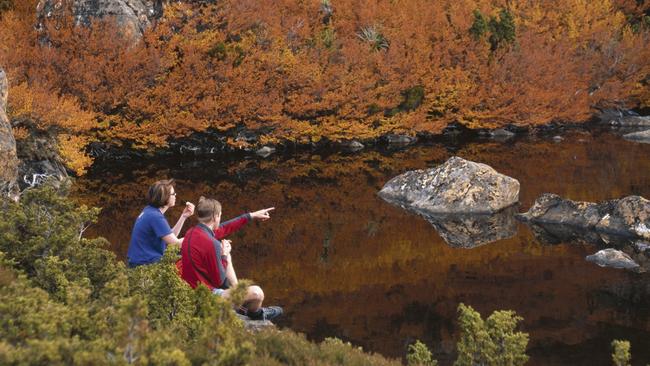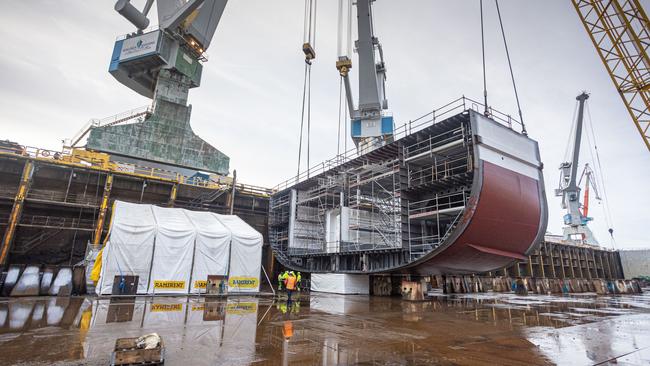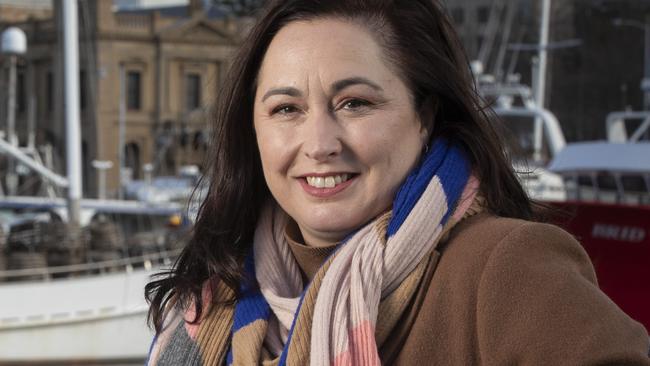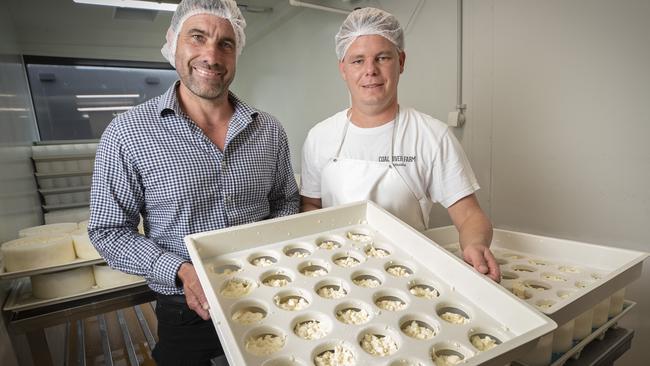Bush summit Tasmania: Why new Spirit of Tasmania vessels will herald a regional tourism boom
FREE READ: From increased capacity on the Spirit of Tasmania to the reopening of overseas travel – what are the opportunities and challenges ahead for regional Tasmanian tourism?

Bush Summit
Don't miss out on the headlines from Bush Summit. Followed categories will be added to My News.
Smoothing out seasonality and preparing for the new Spirit of Tasmania ships are among priorities for the industry that has breathed new life into many Tasmanian regional areas.
Visitors to Tasmania’s regions are, by and large, road trippers.
With their capacity for 60 per cent more vehicles, the new Spirit of Tasmania ships are expected to usher in a new regional tourism boom when they begin operating next year.
Touring a local supplier for the ships’ fit-out this week, Infrastructure and Transport Minister Michael Ferguson said it was hard to overstate the impact the ships would have.
“It’s going to absolutely electrify our tourism industry here in Tasmania,” Mr Ferguson said.

Tourism Industry Council Tasmania chief executive Amy Hills recently held discussions with local tourism bodies on how the regions could best prepare for the influx of road-trippers.
“It’s actually a big opportunity for the visitor economy, because not only will we have additional capacity, what additional capacity we will have is in the lanes and the metres, that means we are getting some more motor homes and caravans in. What these visitors do it is travel around the state. As an industry we are trying to get out into the regions and hopefully stay in the regions two to three nights,” Ms Hills said.
“Our regions are the lifeblood of the Tasmanian visitor economy.”

The industry’s priority, along with the state government via Tourism Tasmania, is to increase visitation in off-peak times.
Tourism Tasmania has begun to focus more on this area through the recent The Off Season campaign.
Dark Mofo has helped, with some visitors to the festival venturing out into the regions. However the cooler months continue to be a challenge for regional operators.
“A number of the regions are saying they are having a quieter winter, so as an industry we do need to do quite a bit of planning going into next winter,” Ms Hills said.

Attracting and retaining skilled staff is an ongoing problem being acutely felt in the regions.
“That is a challenge we continue to hear repeatedly, then of course accommodating those people where they work,” Ms Hills said.
“That’s going to be a priority for me to look at for the industry, on what sort of solutions we can come up with in the regions.”

Coal River Farm founder and Tourism Industry Council Chair Daniel Leesong said an emerging challenge for Tasmanian tourism was the return of full-throttle overseas travel.
“Given Australians’ propensity to travel overseas, those gates have only just opened fully now...that’s a real risk for Tasmania,” he said.
Despite a quieter winter season this year, Mr Leesong said it was a good sign visitor numbers had returned to pre-pandemic levels.
Coal River Farm welcomes between 70,000 and 80,000 people per year.
“What’s been very encouraging is the numbers have still held,” he said.
A former lobbyist and political adviser, Mr Leesong has himself followed the regional tourism path, founding Coal River Farm at his family’s Cambridge property in 2015.
It’s one of many food, wine and produce-based tourism attractions on the busy Coal Valley route, which has the popular tourist town of Richmond at its heart.
In eight years, Coal River Farm expanded significantly beyond its primary premises, employing around 80 people across the business.
“We are now in about 600 venues for our cheeses and have eight of our own shops in Western Australia, Melbourne and Tasmania,” Mr Leesong said.


